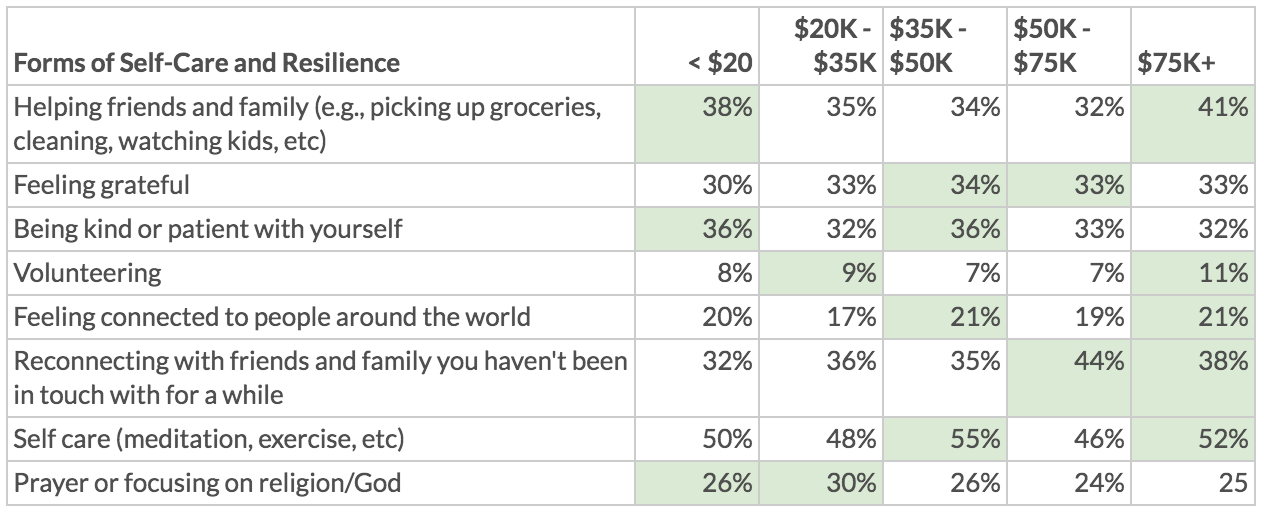Coronavirus: How is America Feeling? Part 10
ICYMI—we love data. And, we want the world to have it… and use it. Please share widely. Today, we’re looking at top issues for our texters, plus some insights into self-care. Data should be like water—flows freely, nourishes everything. Pass it on.
1. Many of our top issues have shifted significantly pre and post-COVID.
- Suicidal ideation has decreased as a percentage of our conversations.
- Pre-COVID (Jan 2020 till mid-March 2020): 29% of conversations. Post-COVID (mid-March till now): 22%
- We have also seen a decrease in number of daily Active Rescues (when a texter has ideation, plan, means, timing to harm themself or someone else and we cannot de-escalate the situation, we call 911) from 28 day average of 27.4 noted on Feb 29th to 28 day average of 23.8 today.
- Anxiety, depression, relationships are top three things now, in that order.
- Despite 91% of our texters reporting they are under lockdown, 25% of conversations still mention school.
- Pre-COVID (Jan 2020 till mid-March 2020): 32% of conversations. Post-COVID (mid-March till now): 25%
- We’re launching an initiative to support middle & high school students, parents, and teachers. For more information, please email Laurel Schwartz (lschwartz@crisistextline.org)
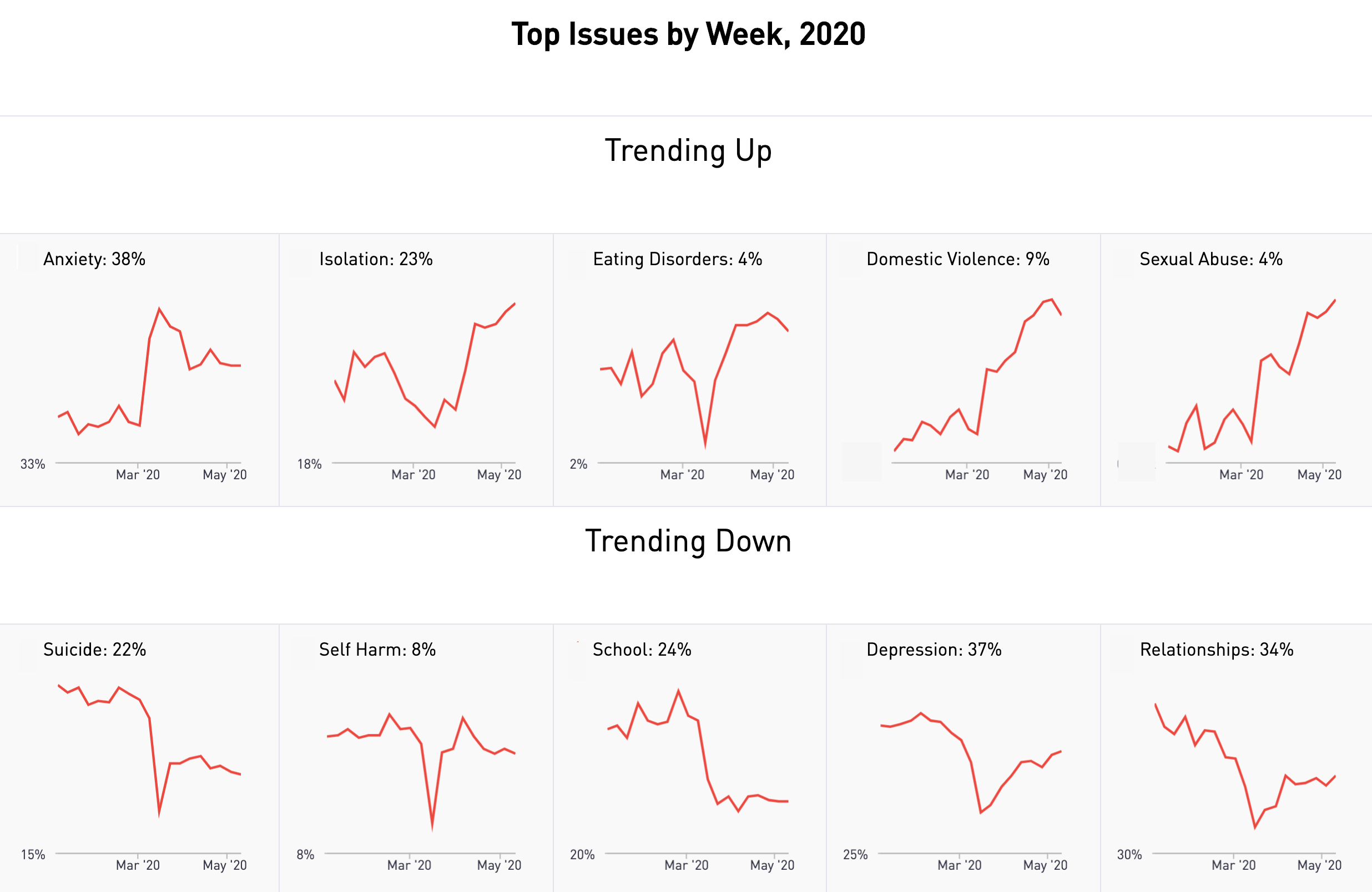
2. Race, with a focus on LatinX texters (source: Texter Survey)
- In prior updates, we’ve mentioned how some races and ethnicities are being disproportionately impacted by COVID:
- Asian Americans are experiencing 3x higher rates of racism and discrimination compared to other texters.
- Black / African Americans are experiencing loss of a loved one at ~2x the rate of other texters.
- Another population being disproportionately impacted by COVID are LatinX texters:
- 88% say their school or workplace is closed as a result of coronavirus, compared to 82% of all texters
- LatinX texters describe significantly higher rates of (1) experiencing recent racism or discrimination, (2) financial issues, (3) recent loss of a loved one, and (4) difficulty caring for loved ones, vs other texters
- LatinX texters are significantly more likely to have a parent that is an essential worker (35% vs 29% of other texters)
- Notes of hope and resilience for LatinX texters:
- 93% found the conversation helpful (compared to 89% avg across all texters)
- 72% mentioned something they’ve never shared with anyone else, compared to 63% of all texters.
- They are significantly more likely than other texters to say they’ve found resilience and hope in helping friends and family (39% vs 36% of all texters)
3. Job Loss and Finances
- Mentions of job loss remain high but may be cresting: last week, 29% of conversations mentioned job loss or financial issues; this week, it’s down to 28%.
- Topics may be shifting from job loss to financial issues. For example, words associated with finances (money, bill, cost, pay, buy, save, spend) are trending up, from being mentioned in 11.5% of conversations in mid-March to 14% in the last week.
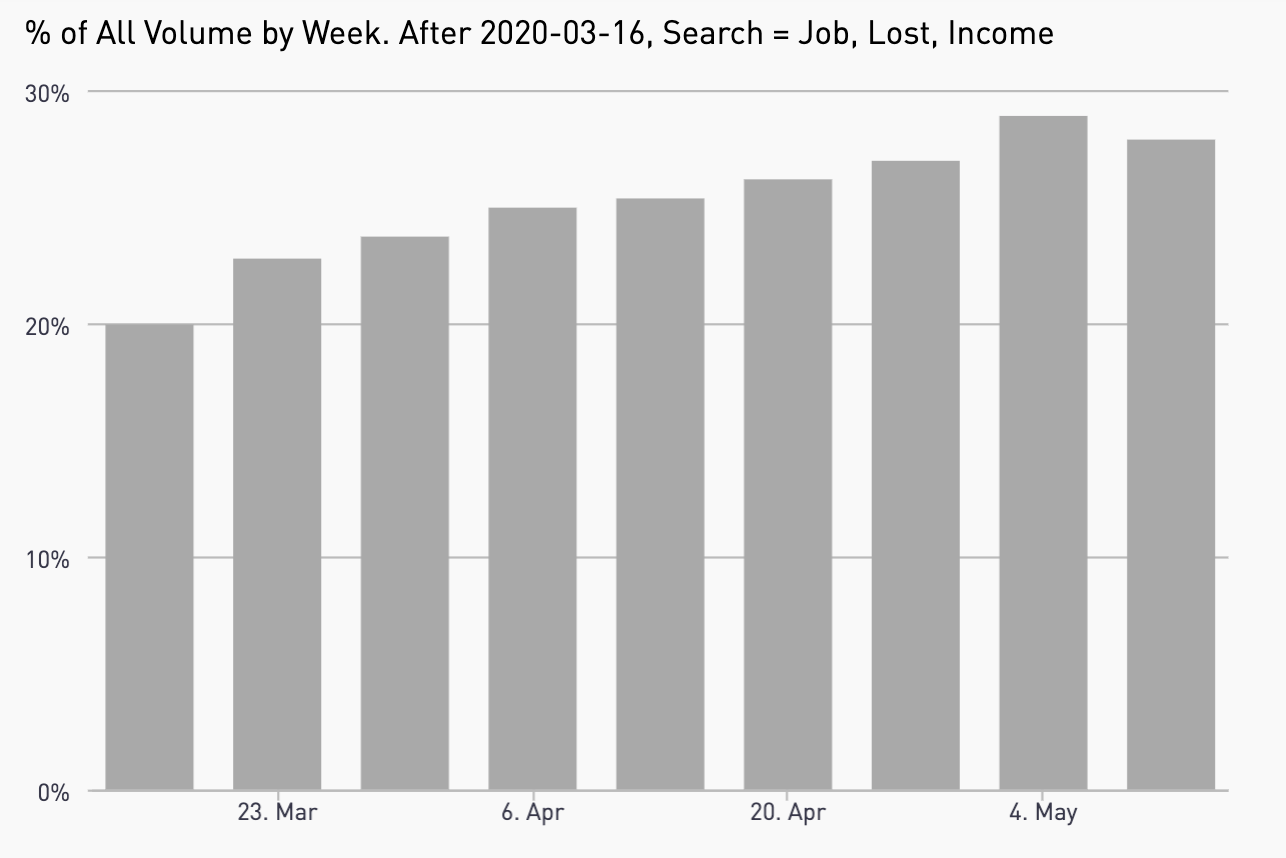
4. Self-Care (Data is from the last two weeks, highest value by row marked in green)
By Gender
- Selected insights:
- Texters who identify as female are more likely to rely on helping friends and family as a form of self-care,
- Texters who identify as male are more likely to feel grateful and feel connected to people around the world.
- Texters who identify as agender, genderqueer, trans female, or trans male are more likely to (1) reconnect with friends and family, (2) use therapy, and (3) are much less likely to use prayer.
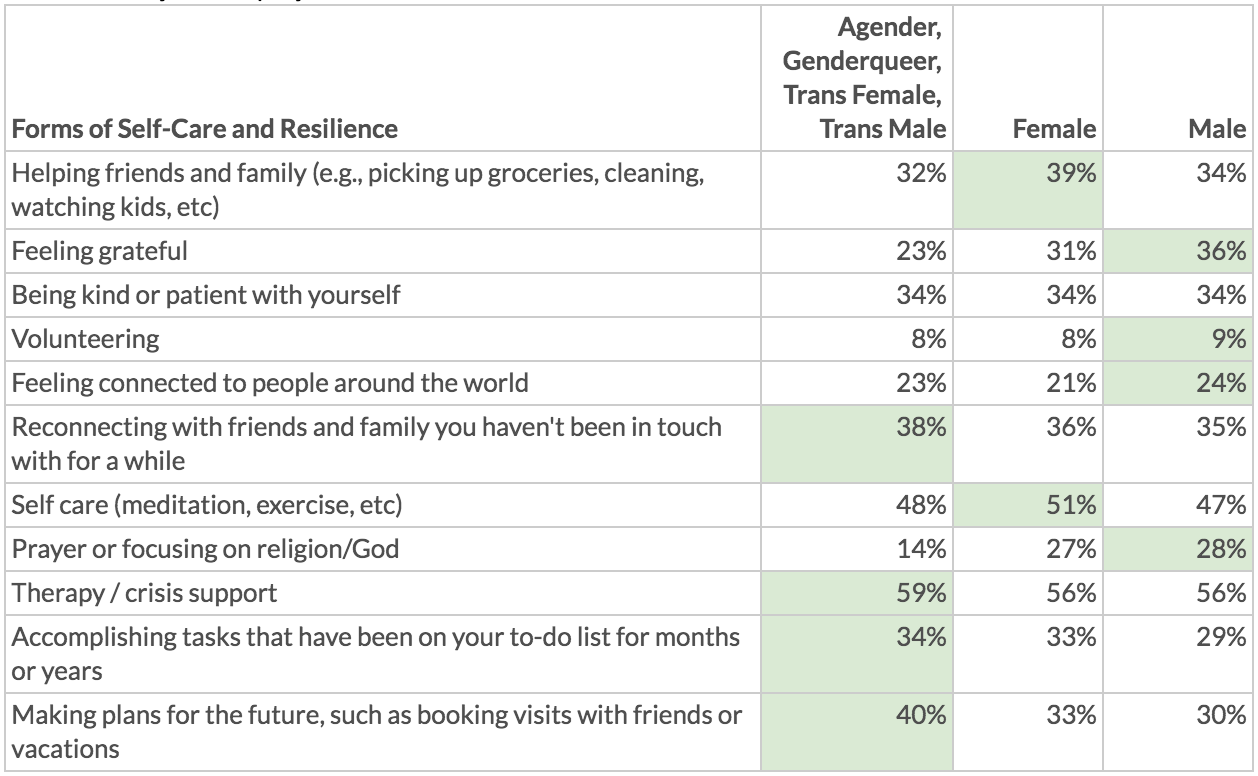
By Race
- Selected insights:
- Two populations disproportionately impacted by the coronavirus outbreak, American Indian / Alaska Native and Asian, are currently more likely than other races/ethnicities to use most forms of self-care.
- These two populations are also more likely to feel connected to people around the world in this moment. (Does self-care tie to feelings of connection and empathy?)
- Relatively high rates of volunteering and helping friends and family go hand-in-hand in this moment.
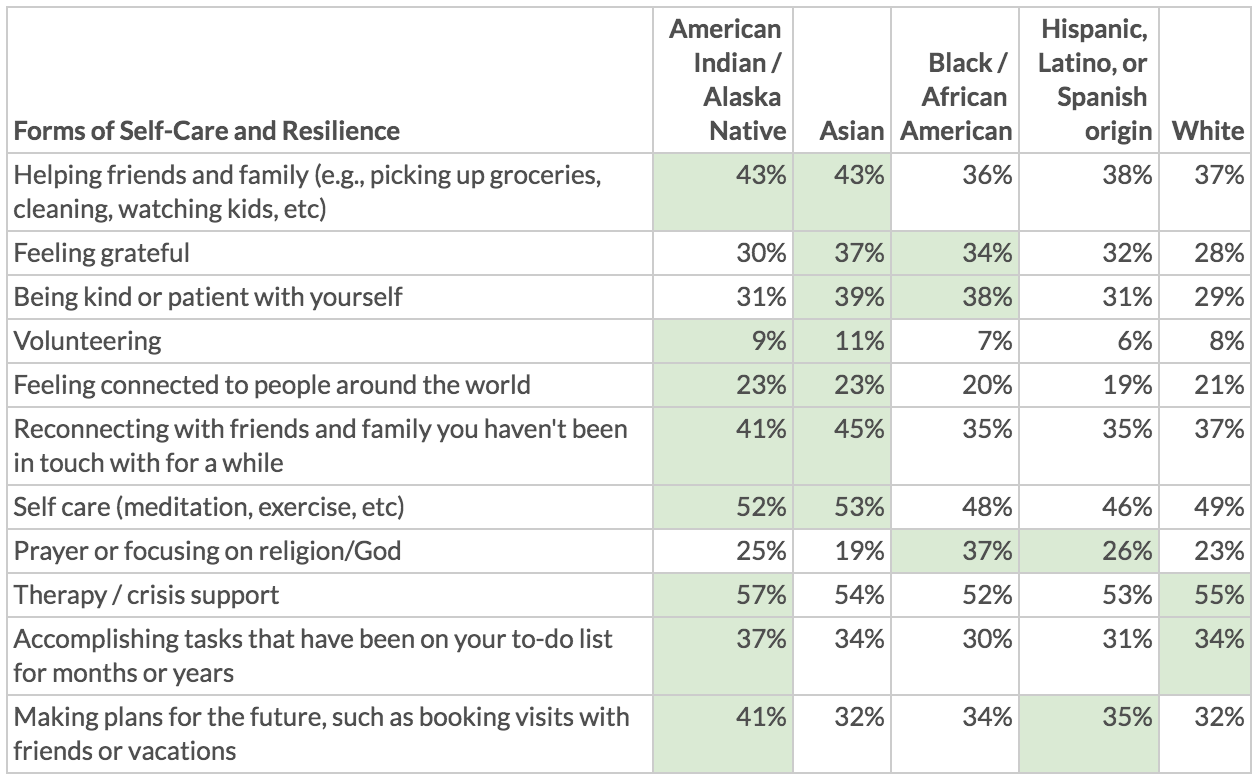
By household Income
- Selected insights:
- Texters from households with incomes below $20K (per year) and >$75K are most likely to help friends and family as a form of self-care and resilience.
- Texters from households with incomes below $20K are most likely to be kind or patient with themselves
- Texters from households with incomes above $50K are more likely to reconnect with friends and family they haven’t been in touch with for a while
